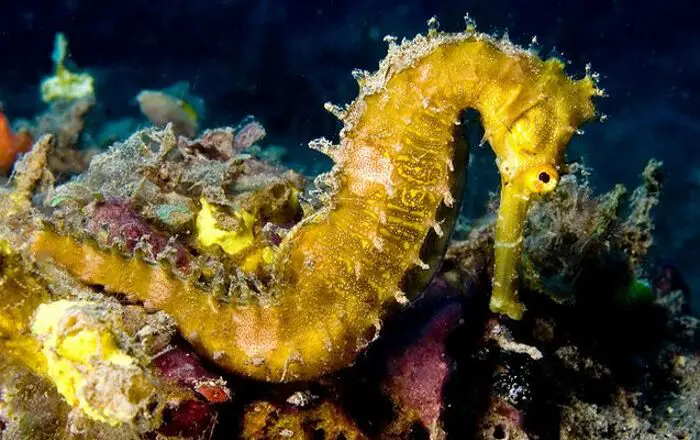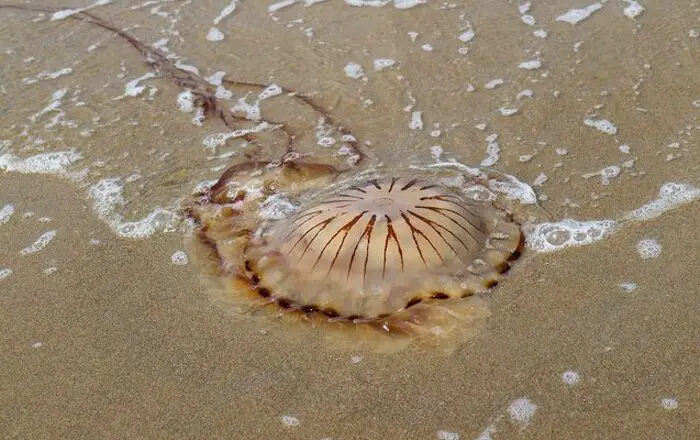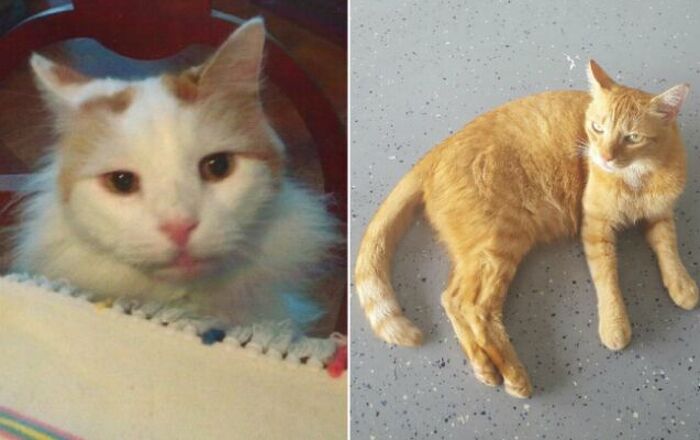
Three-Toed Box Turtle General Info
The Three-Toed Box Turtle is one of the subspecies of the Common Box Turtle, and it is named “three-toed” because its back feet feature three toes.
These turtles are quiet, shy, and gentle. They can make ideal pets for those who wish to add a turtle to their family, but they are solitary animals. Also, they should be protected from other pets, such as dogs, and they will be sensitive to their environment until they get comfortable.
The Three-Toed Box Turtle is a subspecies of the Common Box Turtle, and it is named “three-toed” because its back feet feature three toes.
Native Habitat
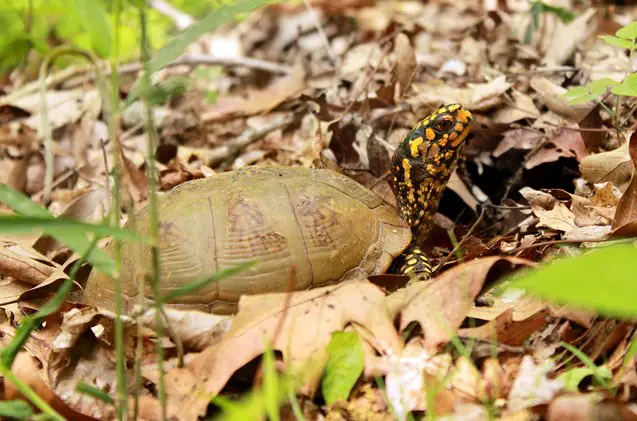
Three-Toed Box Turtles can be found in their natural habitat in a few states that are located to the west of the Mississippi River. These include Arkansas, Louisiana, and Missouri. You can also find these turtles in southeastern Kansas, eastern Texas, and eastern Oklahoma, as well as in portions of Georgia, Alabama, and Mississippi.
You can typically find these turtles inhabiting grassy meadows and woodlands, as they prefer humid areas, including grasslands and marshes. They also prefer living near shallow bodies of water there they can soak, hunt for insects, and drink.
Overall Description
The Three-Toed Box Turtle can be recognized easily by the three toes on the hind limbs, although some turtles might have four toes.
Males will feature a concave plastron, while females will have a flat plastron. Also, males will have a tail that is longer and thicker than that of females, and they also have bigger, hook-like claws on the back feet. However, females will be larger in size overall.
Like other Box Turtles, the Three-Toed Box Turtle features a carapace that is highly domed and a plastron that is hinged. The turtle is able to close its shell completely in order to keep predators out.
The Three-Toed Box Turtle is quiet, shy, and gentle.
Colors
The carapace of a Three-Toed Box Turtle will not be as colorful as other Box Turtles. Instead, it will typically be a solid hue of olive, yellow, or brown. Occasionally, you might find some light striations or spotting. The plastron will be yellow.
The skin will typically also be plainly colored, though there will occasionally be light spotting on the legs and/or face. Males, in particular, will have faces that are more brightly colored with orange, red, or a combination of black, white, and red.
Males will have eyes that are red, while females will have green eyes.
Environment
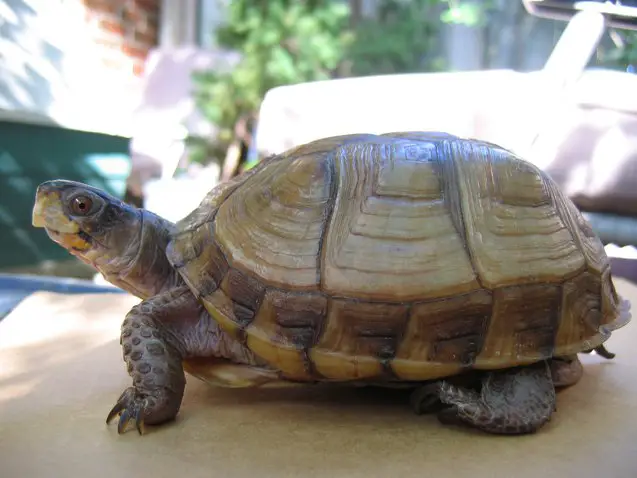
To house your Three-Toed Box Turtle indoors or outdoors, you will need to set up a large tub or terrarium. If you go with a tub, it should be at least 48” wide, 84” long, and 24” deep. If you go with a terrarium, it should be at least 55-75 gallons. The walls should not be see-through or your turtle will always try to move beyond them.
For substrate, mix peat moss and dampened sand in equal parts after adding roughly 10” of pea gravel at the bottom of the enclosure. Then, add a top layer of cypress mulch over 75% of the substrate.
Add shade-loving plants, sheets of bark, and slabs of slate resting on bricks in order to provide cover for these shy turtles. Also spray the enclosure heavily once a week using warm water during the summer and spring, but spray lightly twice a month when the weather is cooler during the winter and fall. Add a large, shallow bowl of clean water so that your turtle will be able to sit in it and drink from it.
You should set up a UVB light bulb overhead, and it should be kept on for 12 hours each day. Also, a heat lamp should bring the temperature in the basking area to 85°F, while the rest of the enclosure should be around 80°F in the warm area and 10° cooler on the opposite cooler end.
Even though the Three-Toed Box Turtle is gentle and does not bite, it should only be handled when it is necessary.
Care Requirements
Three-Toed Box Turtles can eat a variety of animals and plants. You can start with a commercial diet for turtles, and then provide your pet with crickets, earthworms, mealworms, and dark leafy greens like arugula, kale, and red leaf lettuce. You can also feed your turtle fruits like grapes, apples, cantaloupe, cherries, bananas, mulberries, and strawberries, as well as vegetables that include zucchini, peas, sweet potatoes, and winter squash.
Variety is the key, so don’t use one or two foods exclusively. You can also provide your pet with a vitamin/mineral supplement designed for turtles a few times each week.
Always feed your turtle on a flat, hard surface, and include a cuttlebone in the enclosure at all times for calcium. Remove all of the uneaten food right away.
Behavior
Even though these small turtles are gentle and do not bite, they should only be handled when it is really necessary to do so, as they will not like being held. It does take some time for them to become accustomed to their captive enclosure, but once they do, they are fun to watch as they explore.
Because these turtles are solitary and do not require companions, it is best to house them individually.
As with all other pet turtle breeds, get your Three-Toed Box Turtle from a reputable breeder or seller who can prove that the animal has been bred in captivity and has not been taken from the wild.
Photo credit: Carnopod/Wikimedia; AdamLongSculpture/Bigstock; rdodson/Bigstock








